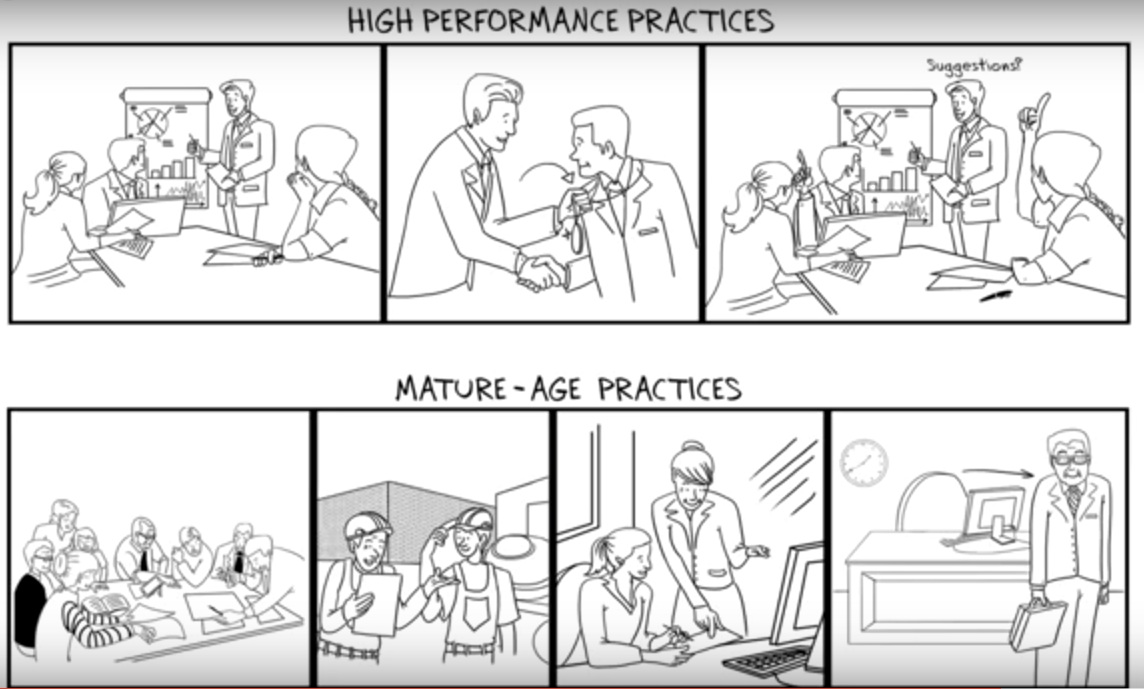Age and Productivity
Employee engagement has been a hot topic for more almost two decades. Various global consultancies have developed survey tools and CEO’s have sweated over the results. Senior managers have been held to account for their scores. Why? Because we know that employee engagement is an important predictor of job performance and a contributor to productivity and profitability.
I have regularly challenged the stereotype that older workers are less productive due to age related factors and argued that productivity has more to do with engagement.
We do know that productivity can be impacted by the physical demands of the job, however the BMW Case Study shows clearly that to address job and workplace design can mitigate many of the physical impediments that impact productivity. In fact the BMW Case study demonstrates that minor changes can result in significant gains.
We have known for some time that if an employee experiences psychological disengagement from being undervalued, not appreciated or even discriminated against then their level of engagement will erode and productivity will drop off.
Important new research published in December 2016 has shown that what they call “stereotype threat” can also work against the engagement of mature aged employees and impact job performance.
Researchers at the University of South Australia and the University of Melbourne surveyed 666 Australian workers between the ages of 45 and 75 over a three-year period about their work experiences. They were particularly interested in three situations, where mature aged workers reported to younger managers, where they were surrounded by younger co-workers and if they worked in manual occupations.
So what is “stereotype threat”? Age stereotypes are persistent in organisations, just listen to the banter, jokes and throw away lines. Older workers are very aware of these stereotypes and sensitive to them. I have heard them all in my work.
Graham tentatively approached me to tell me his story. As an older professional person working in a large corporate he recalled how that when they left the lunch room most days younger co-workers often called out “So granddad are you off for your afternoon nap?” Can you imagine how this impacted on his sense of self worth, engagement and ultimately productivity?
We know the stereotypes about older workers that are voiced and unvoiced. All of us look for subtle (and in this case not so subtle) cues as to the acceptance or otherwise of our identity group. To quote the researchers “Even benign cues can generate stereotype threat among mature aged employees and reduce engagement. Mature-age employees are aware of these age stereotypes and worry that they may inadvertently confirm them. The resulting stereotype threat demotivates mature-age workers and lowers their engagement.”
In summary what they found from the research was that those mature aged employees who experienced stereotype threat in the workplace reported lower engagement 11-12 months later.
The good news was that the work context was both the problem and the solution. “Our research shows that employers who address older workers’ concerns while also investing in training actually reap significant benefits including a committed, stable and engaged workforce.” Overtly change the messaging, reassure individuals they are valued and respected and these cues will generate a sense of psychological “safety in the work environment”.
Sadly they also found that many organisations were “far from up to the challenge” and could face problems as the workforce increasingly ages and people retire later in life. Other research in both New Zealand and Australia indicates that very few employers have in place specific policies and programmes for mature aged employees.
These findings reinforce our recommendation that employers need to be deliberately developing policies and programmes that are age friendly. Simply to claim that you are an equal employment opportunities employer and you have a diversity and inclusion policy in place or that you have HR best practices for example flexibility, is not going to be enough. Ironically these very beliefs may be contributing to stereotype threat and disengagement.
What to do
The researchers found that two types of management practices reduced threat and increased engagement.
- The introduction of high performance practices – training, rewarding of performance and participation in organisational decision-making. This is best practice no matter the age of employees, however as this research has shown, insufficient on its own in countering stereotype threat.
- What is required are specific interventions that provide the opportunity for mature aged employees to update their skills, re-design jobs, mentor, enter into graduated retirement pathways etc.
It was the presence of both that were critical in communicating to mature aged employees that their employer cared about them and their age specific needs.
While the journal article itself is very technical the authors have prepared a 3 minute You Tube that summarises the key messages using funky graphics. Click here to view.
Partners in Change have developed tools for reviewing an organisations people policies and practices for age friendliness and can advise on specific actions that will make a difference.
Contact us if you would like to discuss this article and how we might assist further.